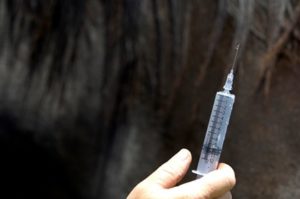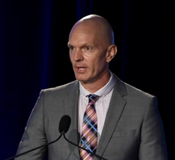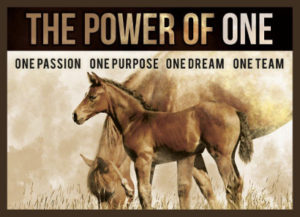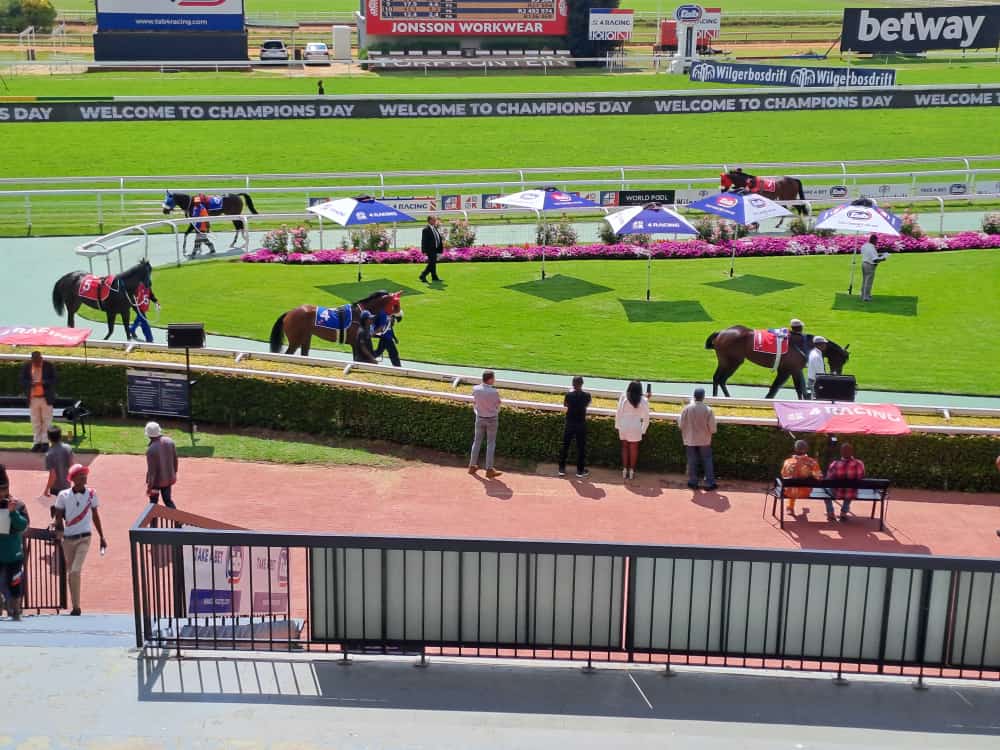 I’ll dive right in. Medicating the racehorse. I’ll state from the outset, I am not a fan. Of course, as with so many things in life, there are now various shades of grey and along with that, there are various medications as well as various levels of abuse.
I’ll dive right in. Medicating the racehorse. I’ll state from the outset, I am not a fan. Of course, as with so many things in life, there are now various shades of grey and along with that, there are various medications as well as various levels of abuse.
We have ‘proper’ performance enhancing drugs (or PED’s – because they’ve become such a part of the lexicon that they even have their own TLA) and these are divided into substances the authorities are aware of and have banned and the substances the authorities don’t know exist and haven’t been able to ban yet. Then there are medications for therapeutic use – which can also be used in non-therapeutic, performance enhancing ways – and therapeutics which don’t leave the system as they should. And our regulatory body needs to sift through all of this and decide which is which. And how much of a transgression is really a transgression. There are allowances made for first time transgressors and scales of punishment for repeat offenders (although there seems a statute of limitations on how long previous offences are considered pertinent).
I have a two-pronged objection to putting things in horses that don’t belong there. The first is my bunny huggy, moral high horse opinion that it is dangerous to the horse and those around it and secondly, I find the damage to our stats, stud book and customer base utterly unconscionable.
Bad news travels fast
With the dawning of the internet age and the advent of social media in particular, bad news travels fast and it travels wide. It doesn’t even need to be true. But true or not, the damage negative publicity does is all too real and it has become a problem. I have my ups and downs with racing, but overall I’d classify myself as a fan (my apologies to those who have just choked on your coffee). Sadly, saying you like racing is not terribly acceptable in polite company (or in my case, not so polite company, but let’s not split hairs). Now at this point, I have to break some rather shocking news. I understand that racing is considered quite a big deal by all of us who are involved, but in actual fact, racing is considered entirely irrelevant by quite a large portion of the rest of the world. And among the the general public that has heard of racing, it does not enjoy a good reputation. To be fair, this is largely due to misinformation and a lack of education about what we’re really all about, but it is a problem, because ‘the general public’ is our customer base.
The other difficulty is that racing is very good at clamming up at the slightest whiff of criticism. Now here’s the rub – whether it’s perceived (I said perceived) over production of Thoroughbreds, cruelty to horses in training, break down rates, abuse of drugs, race fixing, or lack of proper after care programmes for horses leaving the track, the public has an opinion on racing and it’s not a positive one.
Criticism – not a bad thing
 Unfortunately folk have progressed well beyond the ‘helpful hint’ stage and our critics tend to be of the angry, shouty variety (often because they feel they were ignored at the ‘helpful hint’ stage when they were still reasonably civilised and nice). But – and this is important – annoying though it might be, if people are being critical they are still trying to have a conversation with us. In other words, they are still interested. This presents an opportunity, if we’re willing to take it.
Unfortunately folk have progressed well beyond the ‘helpful hint’ stage and our critics tend to be of the angry, shouty variety (often because they feel they were ignored at the ‘helpful hint’ stage when they were still reasonably civilised and nice). But – and this is important – annoying though it might be, if people are being critical they are still trying to have a conversation with us. In other words, they are still interested. This presents an opportunity, if we’re willing to take it.
However, racing folks have equated criticism with dislike, which is not the same thing at all, but instead of dealing with problems (preferably at the ‘helpful hint’ stage when everyone is still being polite), it all gets left until we are faced with angry, shouty critics, at which point racing usually chooses to bury its head firmly in the sand and hope like mad the critics will get bored and go away. It’s not a great strategy frankly, firstly because it entrenches the view that we must be hiding something and secondly because even if it is successful (and to be fair, it does work from time to time), by the time we pull our heads back out of the sand and look around, we are usually alone. So if the PR damage of broken horses, fixed results and welfare issues don’t sink us, the way we treat our customers will because as a marketing guru told me recently, when all’s said and done, goods aren’t sold, they are bought. People simply will not spend money on something they do not trust.
So now I have to break some more bad news. Nevermind the people who are still around and trying desperately to tell us what they would like changed, there in fact are very few people out there who still like us. Very few indeed. And the few that remain are disappearing at a rate of knots (mainly due to that head in the sand thing mentioned above). So ignoring people is probably not a great long-term strategy and we should probably have a bit of a rethink.
A few ideas
I don’t have all the answers, but I do have a half decent typing speed and access to the internet and therefore access to what’s going on in the rest of the world and how other people handle similar problems.
The Hong Kong Jockey Club (HKJC) is widely admired as one of the most successful racing jurisdictions in the world. While that has become something of a rote statement, it was not that long ago that they were not the paragon of excellence and success they are today. It was interesting to watch the HKJC’s CEO, Mr Winfried Engelbrecht-Bresges’ presentation at the Jockey Club’s recent 64th Round Table Conference on Matters Pertaining to Racing in which he chronicled how the HKJC turned itself around.
Steered by former CEO Mr Alan Li, they set as their values: World Class Racing, Unlimited Access to information, Highest Integrity and Prohibited Substances-Free Racing. Mr Engelbrecht-Bresges explains, “We adopted those principles as an end to end process, and we think in a way that this has really guaranteed the customer confidence.” As they say, the proof is in the pudding. The HKJC now boasts 5,600 full time employees and 25,000 part time employees and a membership body numbering 24,000. Last year they had a total turnover of USD $24.8 billion of which $13.8 billion was generated from horse racing, $10 billion from football, and $1 billion from lotteries. “But,” he continued, “the cornerstone in everything we do is what we see is prohibited substance-free racing. Because we feel it is essential to our sport. It is essential for the public support. It is essential for customer confidence. It is essential to ensure a level playing field. And being a little breeder myself, I feel it’s essential when it comes to the selection of horses for breeding.”
I was interested in Mr Engelbrecht-Bresges’ use of words such as public support, customer confidence and level playing field – not words we are used to hearing when it comes to our product – at least not by the public. Sure, the HKJC also employed lots of other ideas to hel achieve these things, but they started with drug-free racing.
Strong regulation is imperative
Also speaking at the conference was Jeff Novitzky, Vice President, Athlete Health and Performance, Ultimate Fighting Championship (UFC) who delivered a presentation on the UFC’s Anti-Doping Policy. Mr Novitzky has worked on many high profile doping cases during his career (including the Lance Armstrong scandal) and relates, “Throughout those investigations, I got to interview 150 to 200 high profile professional athletes who chose to use performance enhancing drugs. In addition to asking them about where they got the drugs, how they paid for them, how they were distributed, I always took the opportunity to ask them why they chose to use.”
The answer is rather startling. “Overwhelmingly the majority of the time, it came down to one word, and that word was trust. They said, “I didn’t trust that my teammates weren’t using. I didn’t trust that my opponents weren’t using, and maybe, most importantly, I didn’t trust that my sports governing bodies cared enough because of the weakness of the program or in some cases total lack thereof.”
Also, the athletes he’d dealt with did not trust the sports governing bodies who were running their own anti-doping programs and Mr Novitzky stressed the importance of independent administration of an anti-doping policy to ensure that everyone was treated equally, fairly and with due process.
Sanctions are another important part of a solid anti-doping program and with all the incentives not to follow the rules, the theory is you have to make the risk outweigh the reward. He explained, “The success of any anti-doping program, especially as it relates to the business model of a company or organization, is not positive tests on the back end and sanctions, but a deterrence on the front end of that program.”
While the purpose of the UFC’s programme was first and foremost to protect the health and safety of their athletes, it was also to set an example and show that “a comprehensive, robust, anti-doping program not only sets the proper example for society, but is good for the sport, good for the fans, good for your business, and good for your bottom line.”
Back home
The NHA finally issued a press release regarding the recent spate of alleged cobalt positives. While it seems administrative hiccups including “the notices and information regarding cobalt and vitamin B12 were inconsistently disseminated and cobalt related documentation had not been correctly reflected”, the NHA has decided not to prosecute and none of the concerned parties will be charged.
While not disseminating correct information on our rules is far from ideal, this press release is the closest racing has got to admitting fault since Striker apologised for his ride on Dublin Rebel last year. That’s pretty ballsy.
As such, I am encouraged to see the NHA being proactive (yes, I did use the terms ‘NHA’ and ‘proactive’ in the same sentence) by launching their series of road shows to discuss rules, limits and threshold amounts with trainers and vets. They lose a few points for not making these meetings open to owners (who, after all, foot the bill – for the horses, the trainers, the vets and ultimately the medication), but I am assured information will be disseminated after the event.
The Turffontein, KZN and Kimberley meetings have already been conducted and received positive feedback. The Western Cape is scheduled for Friday, 2 September 2016 and the Eastern Cape meeting for Tuesday, 6 September 2016 and are well worth supporting.
It may not provide all the answers we’re looking for, but it’s a start.












